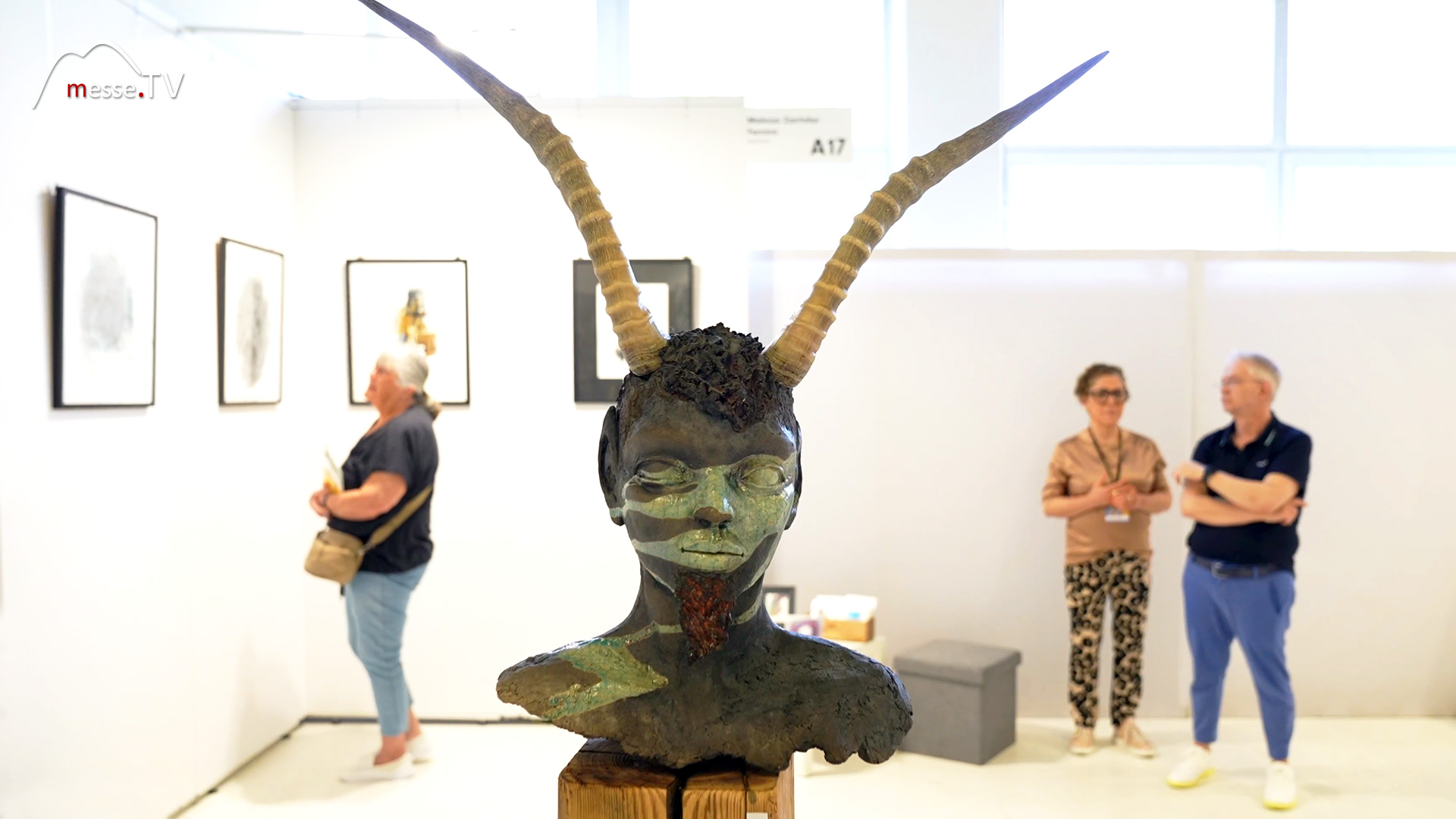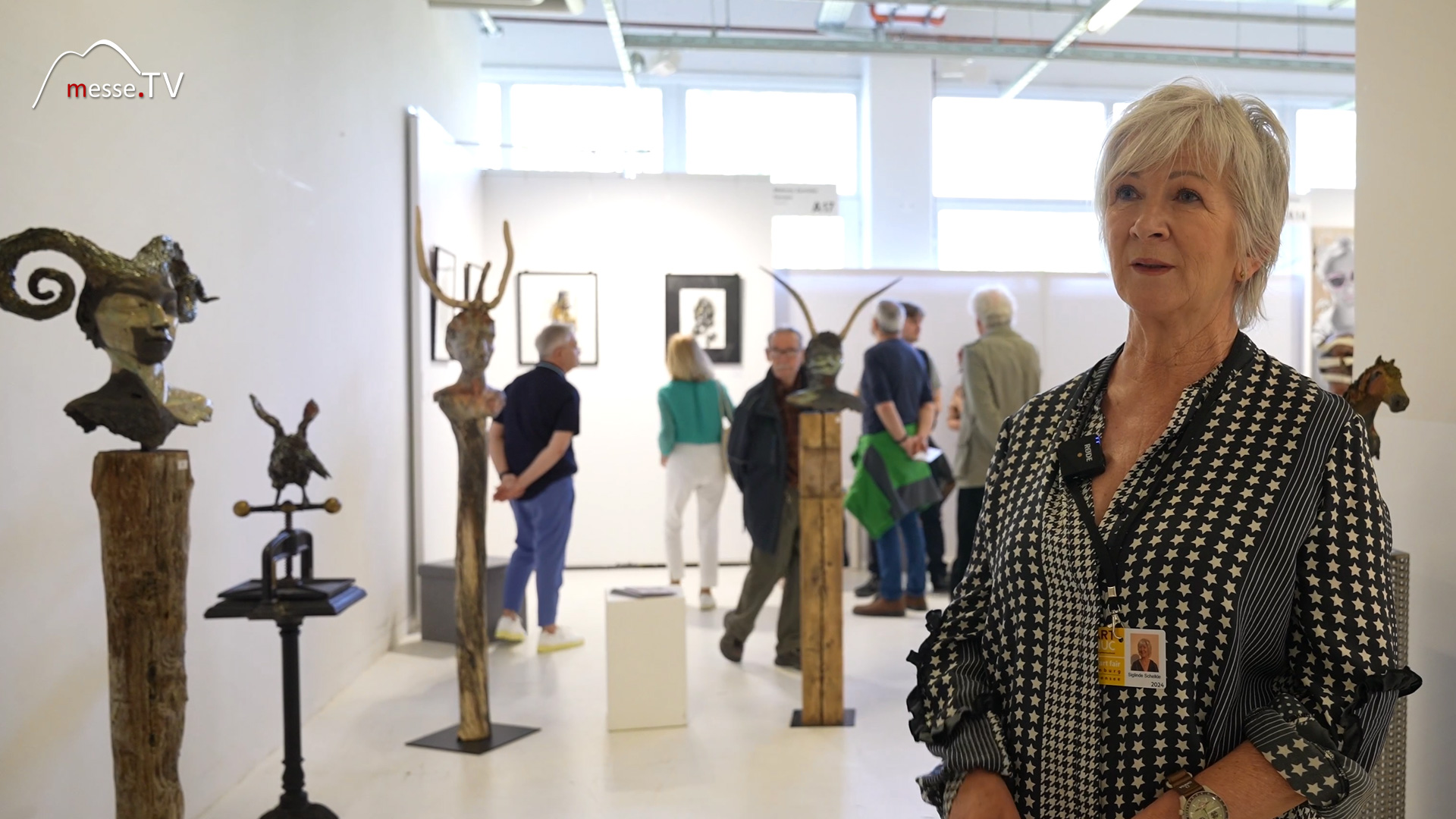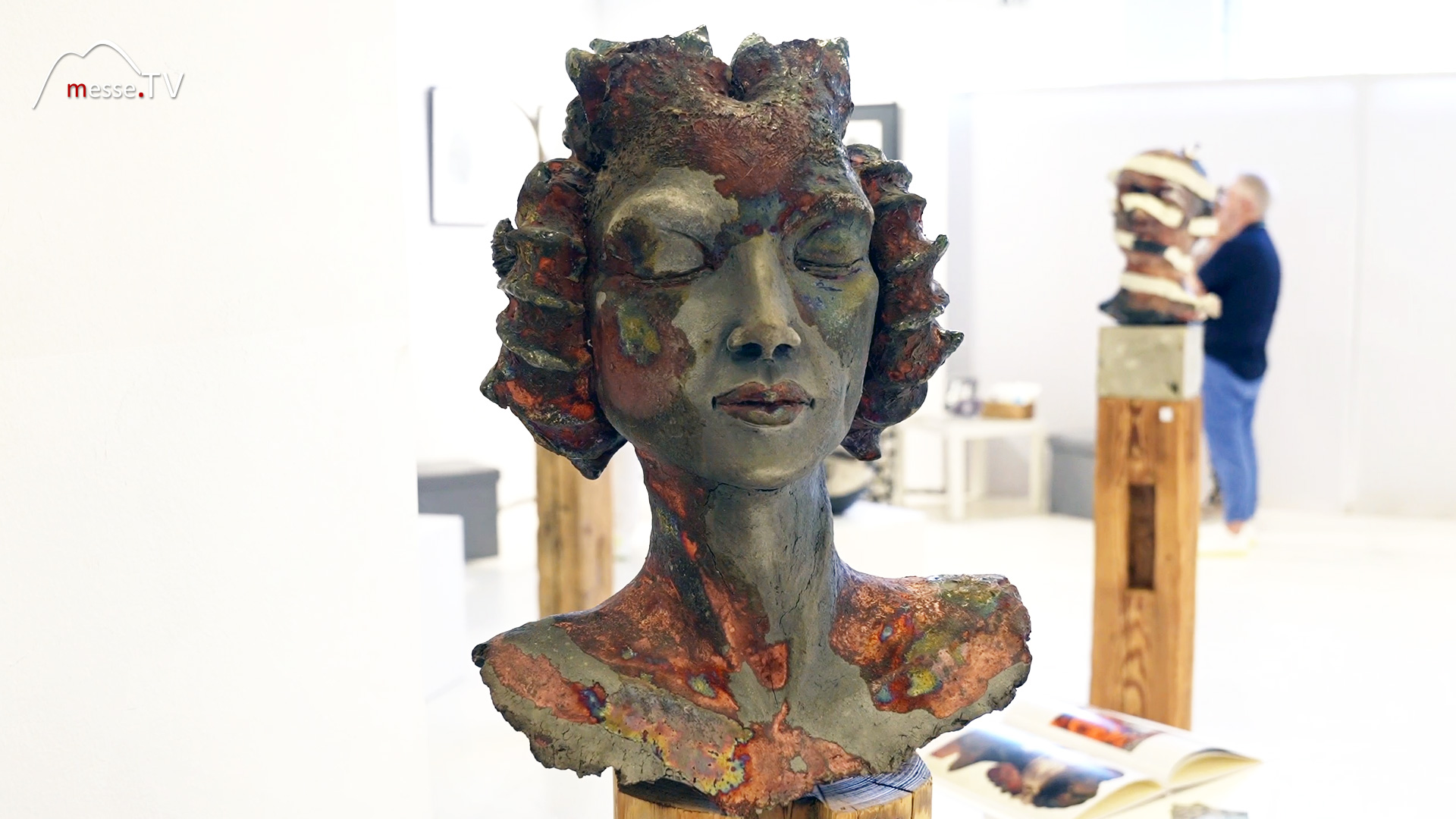Siglinde Schelkle: Rakubrand Ceramic Studio's Artful Creations
The Bavarian artist Siglinde Schelkle, who has a studio in Nussdorf am Inn, has reinterpreted a favorite firing method in the production of ceramic works of art. She uses the raku firing technique developed in Japan since the 16th century. Here, clay pieces are produced in an artistic and unique style. The technique developed in Japan was mainly used for the artistic production of exclusive tea sets. Inspired by this technique, Siglinde Schelkle now works to create imaginative sculptures.
After the first raw firing, the pieces are glazed and fired a second time. Using heat-resistant tongs, the 1000 degree Celsius pieces are removed from the kiln's firing chamber and immediately placed in a bed of sawdust and covered with it. The special feature is that the sawdust then begins to burn and the smoke that forms penetrates the uppermost layers of the glaze, resulting in very imaginative colorations. These are usually deliberately black and white or cause colored glazes to acquire a filigree crackle, i.e. very fine cracks. The smoke from the sawdust colors the pottery and gives it an inimitable character. The fascinating thing about raku firing is that both calculable and incalculable effects are created. The black smoke that penetrates the cracks is intentional. It is the carbon that causes the coloration. On the other hand, other surfaces can take on a completely different color, which is what makes it so artistically appealing.
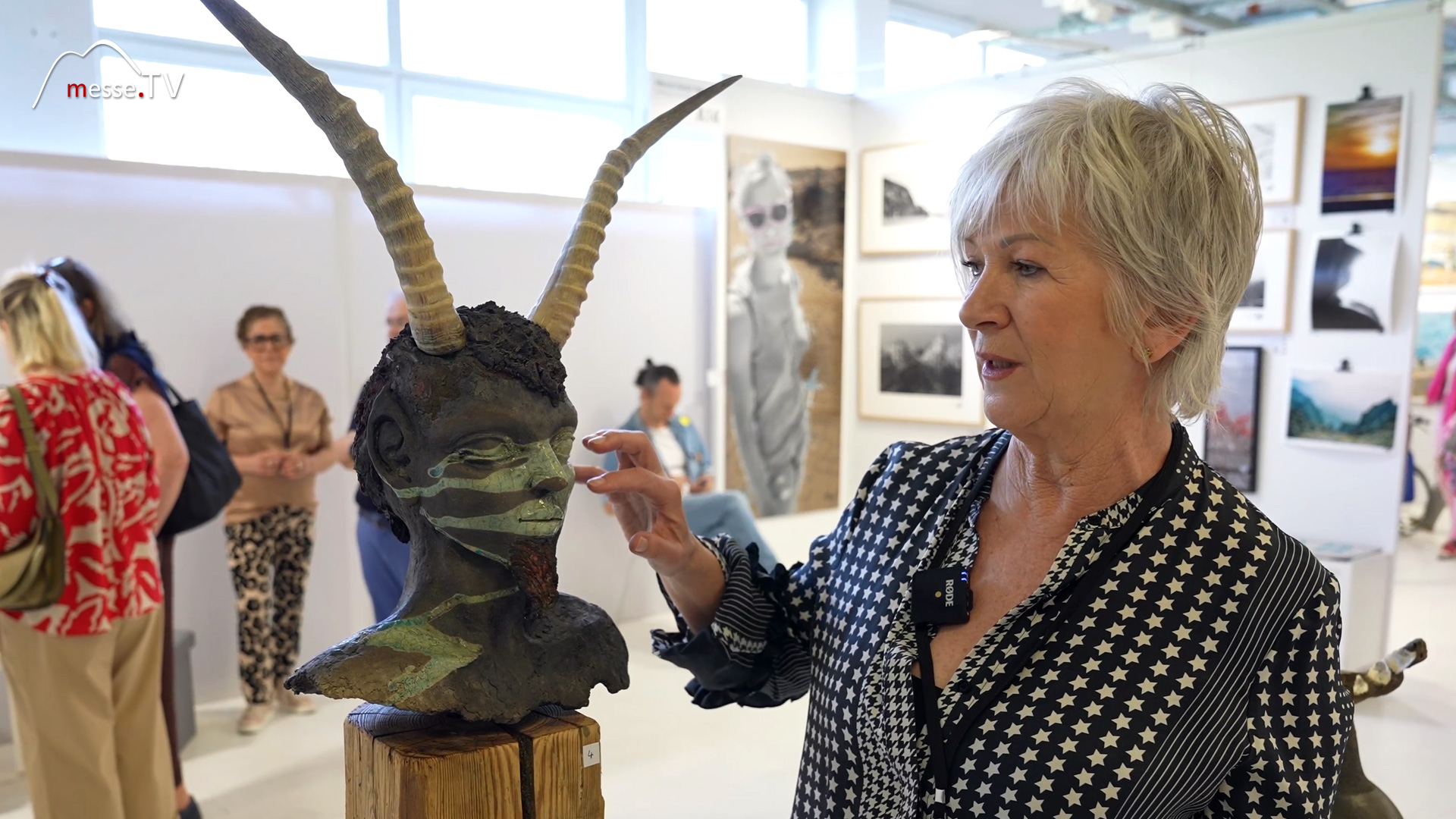
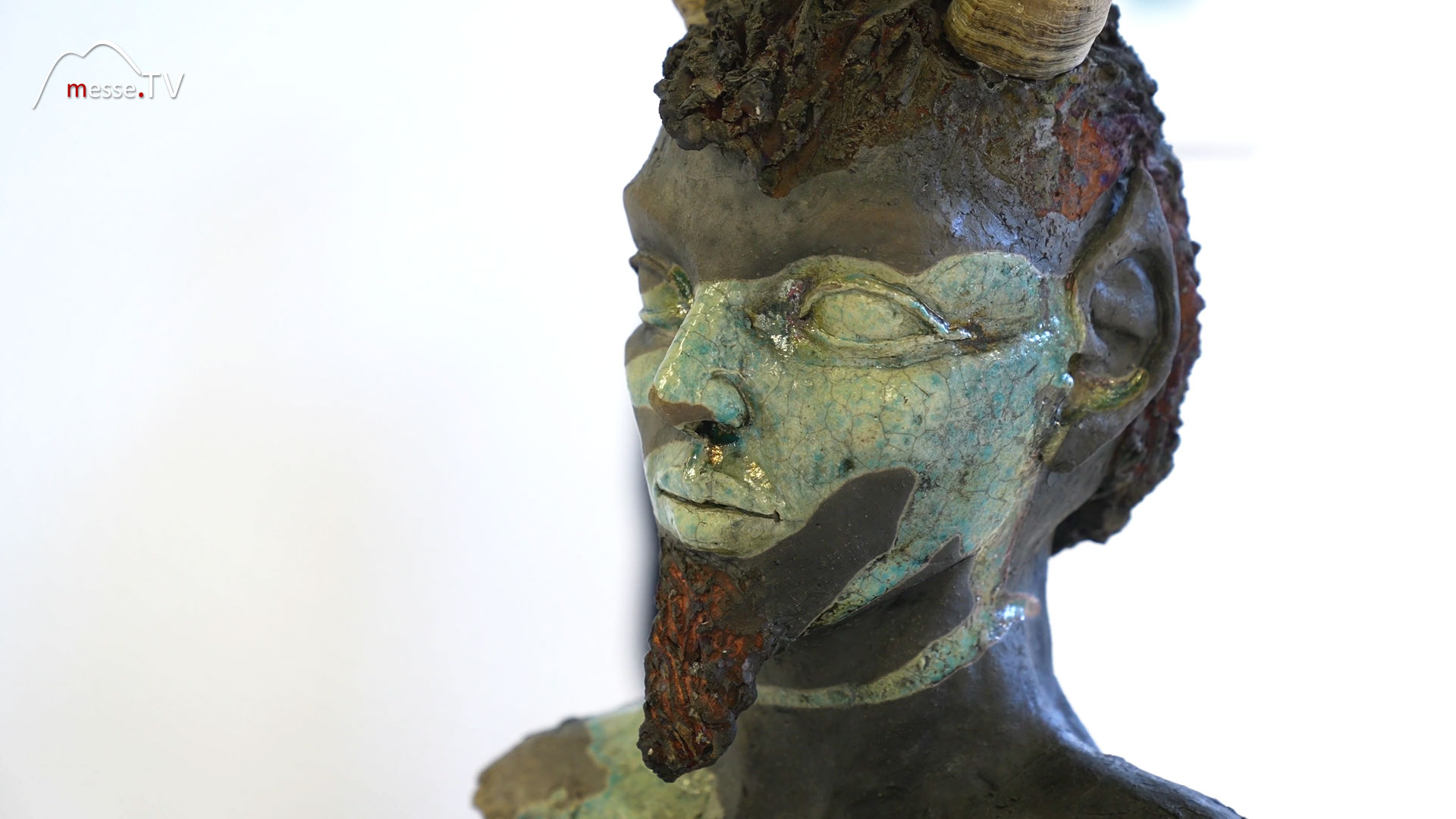
Siglinde Schelke is so enthusiastic about this technique that she uses it to give her creations a completely new look. She creates wondrous heads and fairy and animal figures with horned applications that radiate a certain mysticism and independence alongside clear facial expressions. The resulting faces convey a pleasant sense of calm and serenity to the viewer. Each piece is unique. The copper-colored surfaces resulting from the raku firing as well as the finest cracks distributed over the body surfaces are always a pleasure to look at and discover anew.
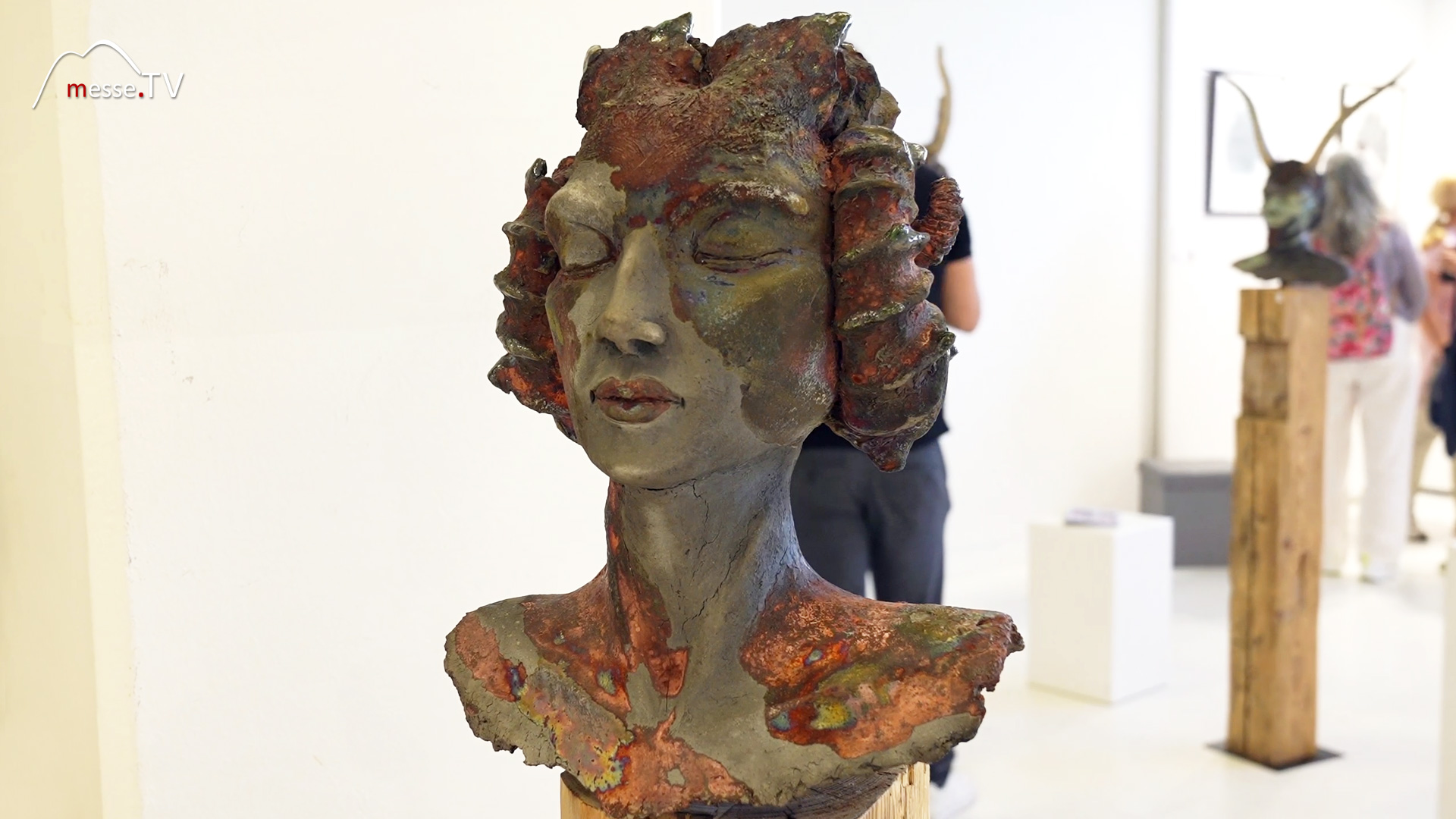
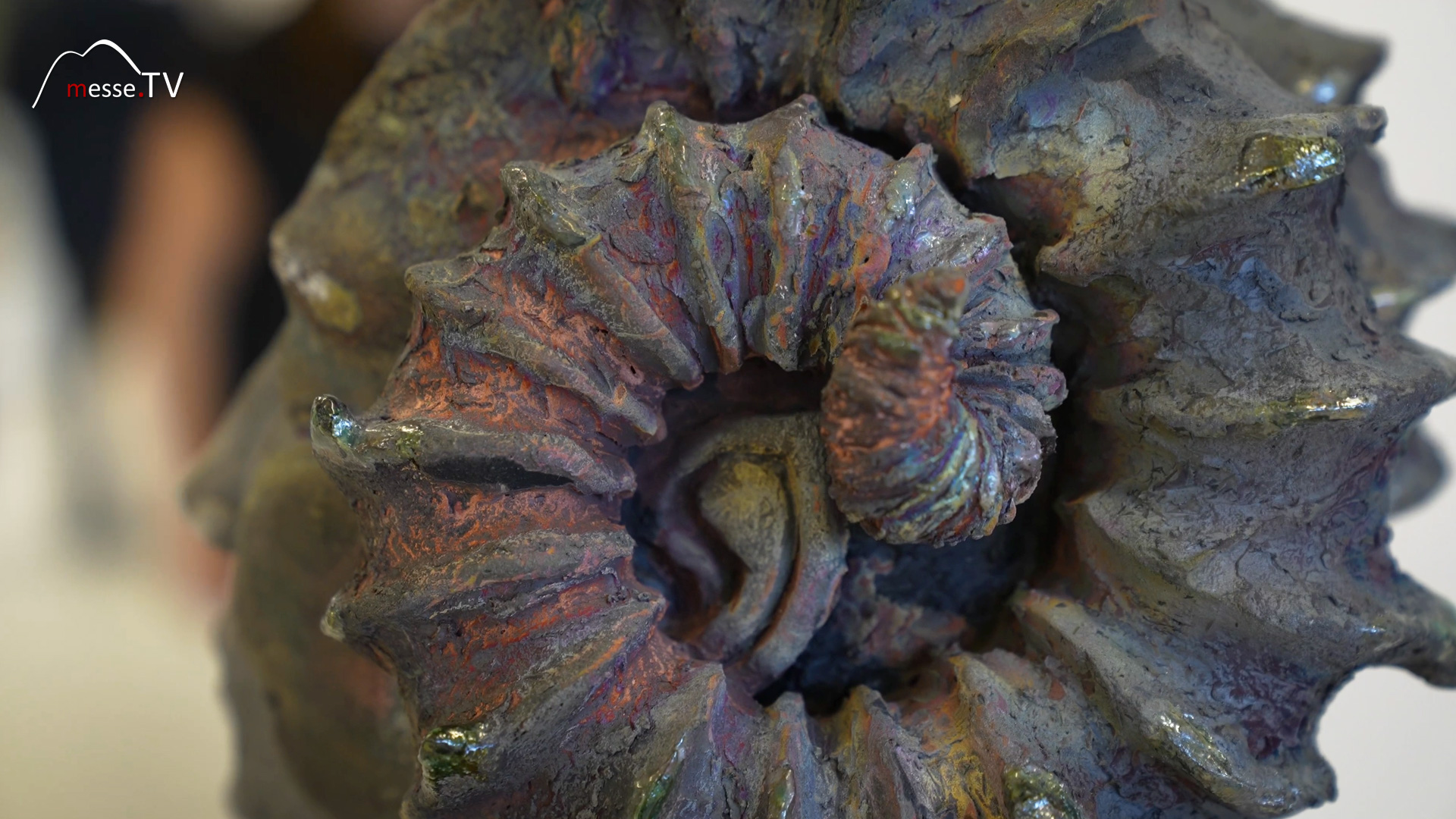
The artist says of herself about this exciting work at the kiln: "It is a wonderful wow effect to look at the sculptures after they have cooled and to recognize their beauty - but, and unfortunately this also happens, it can also be a disappointment and therefore scrap". The artist is exhibiting her artworks at ARTMUC in Munich. She combines her head figures and animal forms with steles made of old wooden beams or driftwood, which has a deliberately archaic effect and lends the sculptures an even stronger fascination. The sculptures are priced between 2,500 and 3,500 euros.
